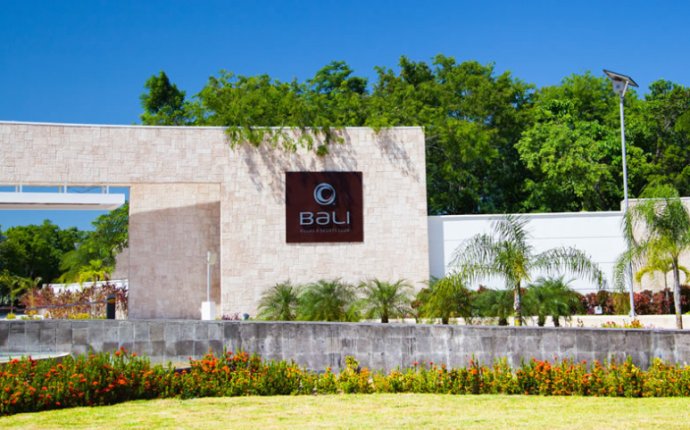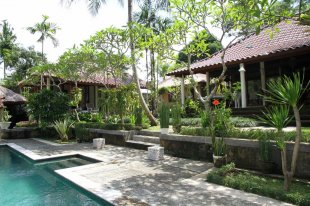
Bali Houses for Rent
Photo
 Jonathan Pye and his wife, Louise live in an open-style house with one large master bedroom set in a sprawling terraced garden. A small pool is steps from the living room.
Jonathan Pye and his wife, Louise live in an open-style house with one large master bedroom set in a sprawling terraced garden. A small pool is steps from the living room.
Credit
Jared Collins
UBUD, INDONESIA — After spending weeks searching the hills of Bali for a home to buy, John Duffield and Rachel Plecas settled on a house that was something of a snake pit.
But even though they found a python slithering through the run-down house during their initial inspection, they fell in love with the overgrown elements of the property, which had once been used as an aviary.
“There was so little to choose from, so we opted to take it and renovate it, ” Ms. Plecas said.
Good houses for sale are hard to find in inland Bali, amid the island’s picturesque landscape of jungles and rice paddies. Most new homes are either occupied by the owners or built specifically as rentals.
Older places tend to quickly fall victim to Bali’s severe tropical elements, unless they are painstakingly maintained.
“There is more and more product on the market but not necessarily a lot of good product, ” said Zoë Rice, who works for Elite Havens, a Bali property agency.
Demand for inland properties has increased dramatically in recent years, primarily driven by foreigners from Australia, Hong Kong and Singapore, local property experts say.
Foreigners cannot own land in Bali, or elsewhere in Indonesia; they either have to lease or to buy through a local surrogate. Last year, the Indonesian government discussed loosening restrictions on foreign ownership, but no action was taken.
“There was not much international investment in Bali inland properties before year 2000, ” said Ricky Wirapatria, general manager of the rental company Ranadi Villa and spokesman for the Bali Villa Association. “But I see during the past 10 years, international demand or interest has extremely increased.”
With villas hard to find, many foreigners opt to lease land and build new homes, said Jared Collins, a senior advisor with Ubud Property, a property company. Since 2005, the price for buildable land has nearly tripled in the Ubud region, fueled in large part by interest from foreigners, he said. Recently, the region has received a lot of publicity as one of the locations in Elizabeth Gilbert’s best-selling book “Eat, Pray, Love” and the 2010 movie starring Julia Roberts.
In Ubud, buying a one-are, or 100-square-meter, plot of buildable land in a rice field costs about 90 million to 180 million rupiah, or about $10, 000 to $20, 000, which is not the bargain some shoppers expect to find on the island.
To lease a property near Ubud generally costs about 1.1 million to 2.9 million rupiah per are a year, or $125 to $325, Mr. Collins said. Leases typically run for 20 to 25 years and are renewable for as long as 70 years.
“A lot of people who come here have the idea of prices from five to 10 years ago, ” Mr. Collins said.
To Jonathan Pye, the scarcity of suitable homes was one of the Briton’s main reasons for buying a house near Ubud last year, a transaction he made through a surrogate. He said he viewed the purchase as a good investment, adding, “It didn’t seem feasible that prices would go down.”
After years living in Singapore, Mr. Pye and his wife, Louise, decided to settle on Bali to enroll their two daughters in the Green School, an environmentally focused private school primarily catering to expatriates, co-founded by the jeweler John Hardy.
Working with Mr. Collins, they paid the equivalent of about $350, 000 for a five-bedroom home. “A lawyer in London wouldn’t want me to sign, ” Mr. Pye said. “But this is the way it works, and you get as much protection as you can get.”
After buying the property, Mr. Pye learned there were other local customs he needed to follow. They had to meet the banjar, the leader of the local community, and arrange a series of blessings. “If it has been cursed, you can’t get staff to work on the house, ” Mr. Pye said.
Ms. Plecas and Mr. Duffield were already experienced in the nuances of the Bali property market when they started shopping. In 2000, they had built Villa Bukit Naga, a seven-bedroom house in a river valley outside Ubud, which they now rent to travelers for $1, 650 a night during peak season.
They later decided they wanted to be closer to Ubud and, after finding the run-down house, just a short walk from the town center, they paid the equivalent of $80, 000 for the remaining four years on the lease. They spent four months, and another $80, 000, to renovate.




